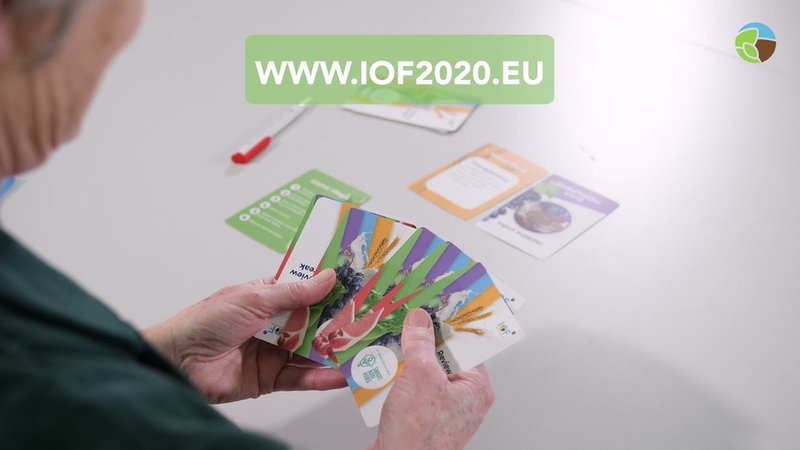
How do we explore ethical issues and values?
Explore ethical issues and stakeholders’ values
What is the result of this step?
This step results in a list of harms and benefits that the technology is expected to produce for each (direct and indirect) stakeholder.
Why?
Harms and benefits function as important identifiers of the values of these stakeholders. It is these values that need to be taken into account in the value-sensitive design of the technology.
Harms and benefits frequently raise questions about what is the right or good thing to do. They raise questions about values. In daily life we will usually try to avoid harms and realize benefits. So far, there’s no problem. But in some situations, realizing benefits for one person means that one will ignore the benefits for someone else, or even harm that person. In these situations when values conflict, people may doubt what is the best thing to do. When this happens, ethical questions arise. Ethical questions are related to what a person or group of people consider important in life.
Usually values underlie benefits and harms. Many lists of values circulate, because contexts differ in which they are discussed. In the agricultural digital innovation project Internet of Food & Farm 2020 a specific list of values has been developed (see box 3). Some values form the core of any value-list about digital technology; such as, privacy, autonomy or well-being/ doing no harm (see box 2: Friedman and Kahn’s list of 12 values). Other values are perhaps more specific to digital farming applications, such as environmental sustainability or ownership.
How?
There are two ways to explore values of stakeholders. One is low-key and demands colleagues who are developing a technology to play a card game. The other demands to conduct more encompassing empirical research by means of interviews or a round table conversation with stakeholders, which is explained in the next step, step 4.
Do: play the values
card game
One way to explore and map the values of direct and indirect stakeholders related to the technology design, is by playing the card game “Review Break” (download card game, download game rules). This game can be played with colleague-developers within the company and without involving stakeholders (see box 4).
What is the result?
The card game invites participants to imagine what values are important for different stakeholders. The result is in a set of reviews of the design or prototype from the perspectives of these stakeholders. (see box 5).
Box 4: Do
Review Break
Find values related to the applied technology
Box 5: Example
Review
Using GPS and temperature Sensor tracking during wine transport
Two other ways to explore and examine the values of the direct and indirect stakeholders is by doing interviews, or by inviting them for a round table discussion.
1. Interview stakeholders individually
The agri tech company will interview the stakeholders (or commission others to interview stakeholders, e.g. researchers) to find out what values they consider most important. During these interviews, it is important to (a) present the idea for the technology, (b) ask what this stakeholder things the possible harms and benefits are and (c) explore the values that are important for the various stakeholders. For step c it can be helpful to use the lists of values (Box 2 and 3).
2. Round table discussion with stakeholders
The company sits down with stakeholders and discusses which values play a role in technology design. In a round table discussion there is more space for reflexive exchange between the participants, which can help to identify and map possible conflicting values. During the workshop it is important to (a) present the idea for the technology, (b) ask participants to note the anticipated pros and cons of this technology for them and explain them and discuss them with the group, and (c) explore the values by allowing participants to choose their top 3 values related to the technology and discuss that in the group again.

Box 2
Friedman and Kahn’s list of 12 values
In 2003, Batya Friedman and Peter Kahn Jr of the University of Washington – who jointly developed the value-sensitive design approach – compiled a list of twelve values. Friedman and Kahn suggested to include these twelve values (see below with their definition) in VSD. The list is not intended to be complete (Friedman et al, 2013). In a later stage, the value of ‘courtesy’ was added, meaning that people are treated with courtesy and consideration.
VALUE | DEFINITION |
Human welfare | refers to people’s physical, material, and psychological well-being |
Ownership and property | refers to a right to possess an object (or information), use it, manage it, derive income from it, and bequeath it. |
Privacy | refers to a claim, an entitlement, or a right of an individual to determine what information about himself or herself can be communicated to others |
Freedom from bias | refers to systematic unfairness perpetrated on individuals or groups, including pre-existing social bias, technical bias, and emergent social bias |
Universal usability | refers to making all people successful users of information technology. |
Trust | refers to expectations that exist between people who can experience good will, extend good will toward others, feel vulnerable, and experience betrayal. |
Autonomy | refers to people’s ability to decide, plan, and act in ways that they believe will help them to achieve their goals. |
Informed consent | refers to garnering people’s agreement, encompassing criteria of disclosure and comprehension (for “informed”) and voluntariness, competence, and agreement (for “consent”). |
Accountability | refers to the properties that ensures that the actions of a person, people, or institution may be traced uniquely to the person, people, or institution. |
Identity | refers to people’s understanding of who they are over time, embracing both continuity and discontinuity over time. |
Calmness | refers to a peaceful and composed psychological state. |
Environmental Sustainability | refers to sustaining ecosystems such that they meet the needs of the present without compromising future generations. |
Box 3
List of values related to agricultural digital innovations
The table below shows examples of values that we came across while discussing innovative digital farming technology in the Internet of Food & Farm 2020 project, as well as in the academic literature like Wright (2011) or Brey (2012). Which values matter is context specific, so it will depend on the specific technology, product or service being discussed.
The table clusters the values in four groups. Three groups refer to values that some authors would call ‘principles’: to do well/ avoid to do harm, to act fair/just and respect autonomy/ rights of users. The fourth group refers to values that are more specific to digitalisation; such as, data ownership/ privacy.
The table is not an exhaustive list and could be adapted for a specific case or context.
Wellbeing/avoiding harm
| Fairness/Justice
|
Autonomy/rights
| Data ownership (sovereignty) and privacy
○ private data ○ competitive data ○ cyber security |
Box 4
Short version course of the game
- Choose the technology design or prototype and describe the applied technology, its purpose and how it is intended to function in practice.
- Identify the relevant stakeholders.
- Each player of the card game draws a hand which determines which stakeholder they imagine to be during the game, the evaluative nature of his review (negative or positive), and the ethical concern or societal impact involved.
- Each player then writes his review.
- All the reviews are collected and read out loud one by one.
- Each review is discussed with all the players.
Box 5
Example of a Review
using GPS and temperature Sensor tracking during wine transport
One player has to play the role of the wine trader and has to consider the value of ‘inclusiveness’. The following review about temperature sensor tracking during wine transport can result:
“The general idea behind the system is ok, because wine conditions are more secured during transport. But the additional costs for me are too large to join the system. Also, now that there is more transparency, there are more issues to solve during transport to maintain the quality of the wine. It is not yet clear who will handle these issues.”
